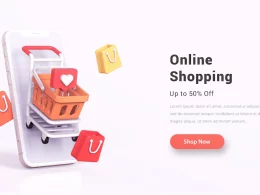Validating a business idea or an entire business model itself can save us money and time when launching into the market. Validating our business hypothesis allows us to know the feasibility of a project, that is, to know if our company is viable or not.
This article is aimed at entrepreneurs , start-up companies that are launching a new business on the market; SMEs who want to validate a new product idea and consultants with clients who do not know if their service is viable or not.
Quick navigation:
What business ideas can be validated?
Create a Minimum Viable Product
How to Validate a Business Idea
1 Investigate online platforms
2 Use online tools
3 Collect Information
4 Carry out A/B Tests in email marketing campaigns
5 Create landing pages to validate a business idea
WHAT BUSINESS IDEAS CAN BE VALIDATED?
Validate traditional physical products.
Validate traditional services.
Validate digital products.
Validate digital services.
Create a Minimum Viable Product
Surely you have heard about launching a minimum viable product to market to validate a business idea. This Minimum Viable Product (MVP) is often synonymous with prototype.
It consists of the minimum expression of a product to be able to launch it to the market of initial adopters. The idea behind an MVP is that any effort required to learn what the customer wants is considered waste (of time or money).
How to Validate a Business Idea
Now we are going to get into the subject and see how to validate business ideas at low cost.
1 Investigate online platforms
Shopify has a free manual for online sales and in chapter 3 it proposes some web platforms where you can find information about the most popular consumer purchases and better yet, study what they say in the comments to get feedback on those products similar to the one you plan to launch. .
I give you some examples:
eBay: one of the world’s largest online sales and auction site.
Amazon: the best known online store and not only for books. Through Amazon Bestseller it allows us to know which are the most popular products.
Kickstarter: a renowned crowdfunding platform , it offers the possibility of seeing all its most popular projects in progress and finding out what is new on the market.
Etsy: It is interesting to see the popular items on Etsy since this online store is dedicated to selling only handmade items.
AliExpress: is Alibaba ‘s retail store that sells products for the individual consumer and retailer. Like the others, it has a section of popular products ordered by categories and levels.
Udemy: in the event that you are thinking of validating an idea for your new online video course, Udemy offers the possibility of sorting its courses by popularity, accessing each of its categories.
2 Use online tools
Google Trends to know if a market is going to grow: Trends allows you to clearly see the trend of one or more keywords that you type in your search bar. Once this is done, you will be able to filter by countries, period and other variables that will help you validate your business idea.
Google AdWords Keyword Planner – You’ve probably already heard me talk about this tool. The Google AdWords planner will allow you to know how many monthly searches Google users perform for a certain keyword. Going ahead a bit, you could also analyze the monthly seasonality of the demand for the product you are about to launch.
Facebook Ads to estimate the size of the market: when creating an advertisement on Facebook, its platform will ask you to segment your campaign by age, gender, country, languages, interests, device with which the user connects, etc. You can see in the right sidebar how the number of people reached decreases or increases depending on the segmentation you apply. It is not about publishing the ad, but about “simulating” it to obtain the number of people included in the public that you have created.
3 Collect Information
Ask your database.
Create and send an email marketing campaign about the new product/service you are going to launch. It is about redirecting the reader to a landing page specifically prepared telling the benefits of the product (text or video). At the end of it you will put a subscription button or box to sign up for a waiting list and thus be the first to know at the time of launch. If many subscribe to the launch list, it is because the product or service could have a high acceptance among your potential customers. Do not send a single email, perform A/B Test as I explain later.
Benefit: build a list of potential customers + validate your business idea.
Conduct individual interviews
A good way to validate a business idea is to collect information about what people think. On the other hand, contacting one of these people is usually positive if we manage to establish a conversation. For all that existsTopsy, a tool that polls the internet and networks based on a keyword you choose. By typing in the search bar the type of product/service you plan to launch, it will give you results that include the Twitter accounts of those who commented. You could get in touch with these people and detect future “ influencers ” for your new business.
Benefit: create a list of clients, validate the idea and obtain direct feedback from the potential consumer.
4 Carry out A/B Tests in email marketing campaigns
Earlier I explained that one way to validate a business idea is to create and send an email marketing campaign to your database. But what if we send two campaigns keeping all the variables constant except one in each of them. This is what in marketing we call Test A/B. ( Note: There can be more than two campaigns, as many variables as you want to analyze ).
Each campaign redirects the recipient of the email to a landing page where we will place a call to action to subscribe to a waiting list for a product yet to be released. In turn, each landing page corresponds respectively to version A or B of the email sent.
The version of the test (A or B), which receives more subscribers to the waiting list , will be the best option and the one that allows validating a business idea. In this way we will obtain feedback from the market and we will be able to discard the variables that the potential client is not interested in.
5 Create landing pages to validate a business idea
If you have read the article up to this point, you will already know what I mean. A landing page (or landing page ) is one that a user arrives at after clicking on an advertisement, purchase button, email, call-to-action , etc. It has no distracting distractions (menu, header, sidebar, footer) and leads directly to the completion of the checkout process.
In this case we will use the landings to test each of the versions of our minimum viable product, in order to validate a business idea. At the end of each landing page we will place our call-to-action that will invite you to leave an email and become part of a waiting list until the launch.
Benefit: build a list of potential customers + validate your business idea.









